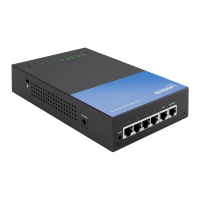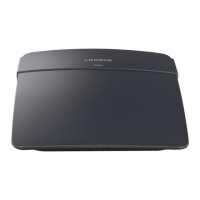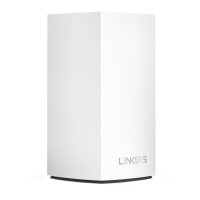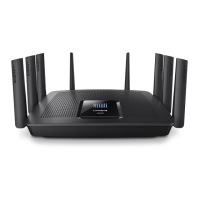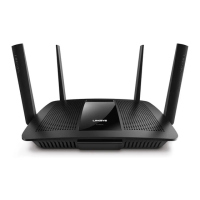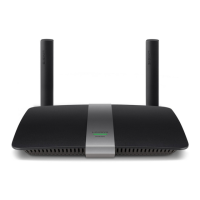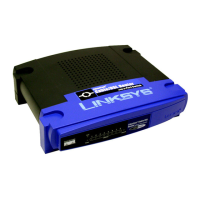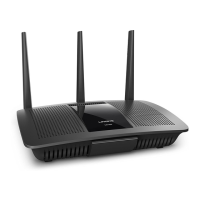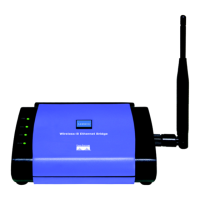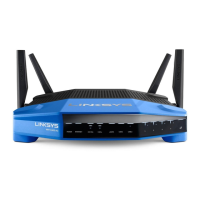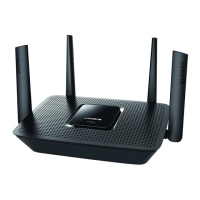22
Setup
Linksys
Advanced Routing
Use the Configuration > Setup > Advanced Routing page to configure the
dynamic and static routing.
NOTE Remember to click Save to save your settings before leaving the page.
You can also click Cancelto undo the changes.
• ClicktheIPv4 or IPv6 tab.
• DynamicRouting
• StaticRouting
• ClickViewatthebottomofthepagetochecktheroutingtable.Click
Refresh to update the data, or click Close to close the pop-up
window.
Dynamic Routing
Enter the settings for dynamic routing by using Routing Information Protocol
(RIP)
Dynamic Routing for IPv4:
WorkingMode: Select the working mode of the device:
Gateway mode or Router mode.
RIP: Click “Enabled” to enable the RIP function.
ReceiveRIPversions: Select one of “None,RIPv1,RIPv2,BothRIPv1
andv2”.
TransmitRIPversions: Select one of“None,RIPv1,RIPv2-
Broadcast,RIPv2-Multicast”.
Dynamic Routing for IPv6
NOTE:
You should enable Dual-Stack IP to configure dynamic routing for IPv6.
RIPng: Click “Enabled”to open the function.
Static Routing
When there are more than one router and IP subnets, the routing mode for
the device should be configured as static routing. Static routing enables
different network nodes to seek necessary paths automatically. It also enables
different network nodes to access each other.
DestinationIP: Input the remote network IP address
that is to be routed. For example, the IP/
subnet is 192.168.2.0.
SubnetMask(IPv4only): Input the remote network subnet
that is to be routed. For example,
255.255.255.0.
PrefixLength(Pv6only): Input the prefix length.
DefaultGateway: The default gateway location of the
network node that is to be routed.
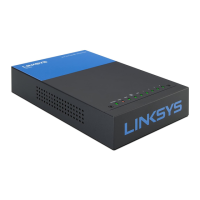
